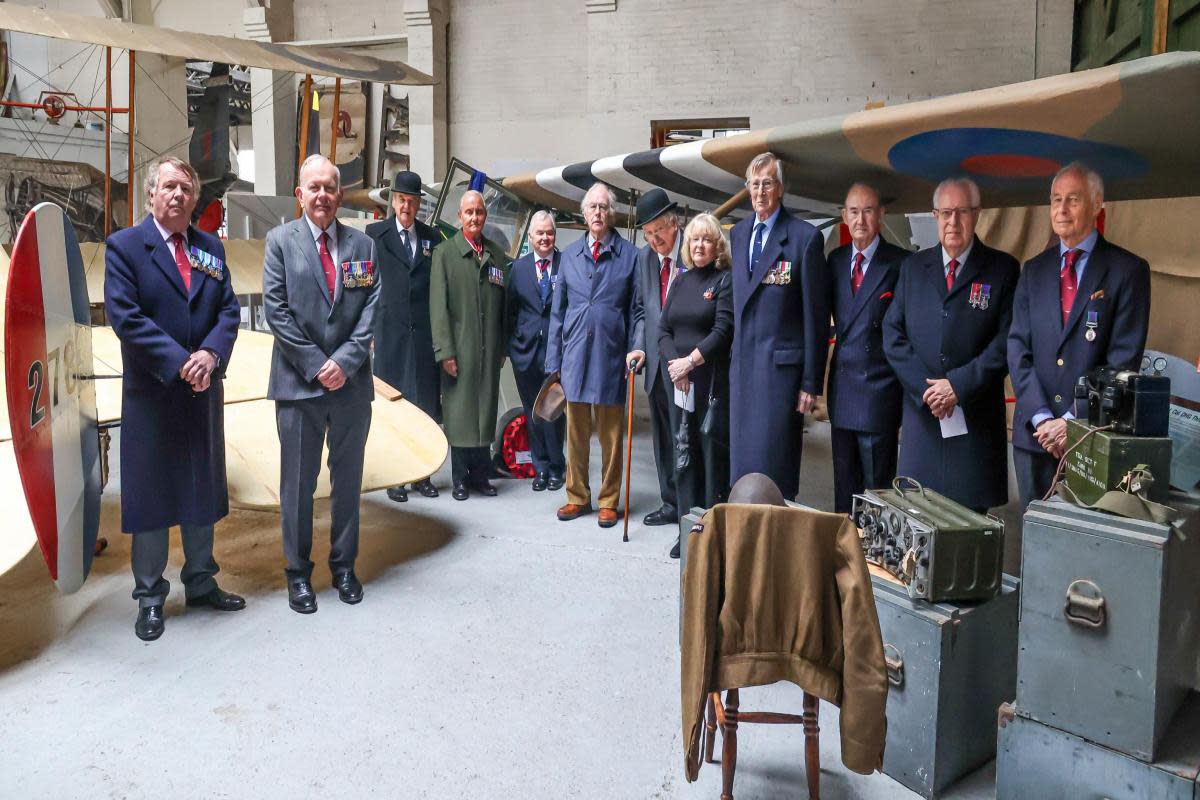Veterans honour pilots with memorial event at Boscombe Down Aviation Collection

Retired service members of the air observation post (AOP) and the Army Air Corps (AAC) gathered to commemorate those who served in both units flying unarmed aircraft to direct artillery fire toward targets and confirming hits, most notably during the Second World War and Borneo Confrontation.
With original plans to hold the ceremony outdoors near a stone memorial to AOP servicemen scuttered due to the rain on Thursday, March 28, the veterans gathered among the planes at the Boscombe Down Aviation Collection (BDAC), near the Taylorcraft Auster aircraft that would have been used by the AOP division during the Second World War.
The group gathered included those who served in the later reorganised AAC and two veterans who served in the AOP.
The retired AOP service personnel flew in these small, unarmed aircraft, the Squadrons of whom formed up at RAF Old Sarum in 1942.
They flew Taylorcraft Austers, small defense-less light aircraft flown by a Royal Artillery pilot and an observer in the rear.
This carried on from aircraft and artillery co-operation work which had been undertaken at RAF Old Sarum since 1924 (the School of Army Co-operation was based at RAF Old Sarum from 1924-40). The RAF provided the servicing of the aircraft, plus equipment personnel and adjutants.
The aircraft were deployed in the field - notably in the Normandy invasion - and would radio to gunners back at artillery positions on the ground where the enemy positions were.
These would then allow the Royal Artillery gunners superior information to deal with the enemy position, and they would have feedback from the AOP aircraft in the vicinity that would establish whether there was a successful hit or not.
The wreath of poppies was laid at the foot of BDAC’s Auster by Lieutenant General Sir Gary Coward, KBE, CB.
SEE ALSO: Four brothers embark on 900-mile cycle journey
Captain Walter Steward, 83, who flew in Borneo from 1962 to 1966, explained to the Journal how the post operated.
Capt Steward said: “The concept was that they flew above our own guns looking across the front line into enemy territory, seeing targets, sometimes with binoculars and then calling down artillery fire. The hope was they didn’t need to be armed in real time but a lot were lost, sometimes to friendly fire, other times to enemy fire.”
Jerome Mostyn, 90, has been flying aeroplanes, including Austers, for 70 years.
Jerome said: “It was very much armed, as we had an enormous firepower at our fingertips.
“You transmit on your radio—a big radio set—and you talk to the artillery and say ‘I’ve spotted a target,’ and they arrange their guns to fire on that target. You can fire an enormous amount of ammunition from guns on the ground to the target on the ground.
“So you weren’t actually armed, but you had tremendous armament available at your fingertips.”

 Yahoo News
Yahoo News 
